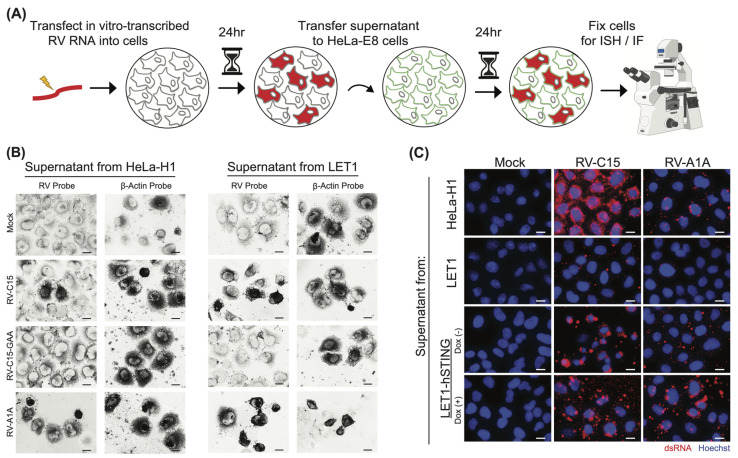Figure 3.
RV-C produced in mouse cells is infectious and capable of reinfection. (A) Experimental design schematic. HeLa-H1, LET1, or LET1-hSTING cells with or without induction of hSTING were transfected in parallel with in vitro-transcribed RV RNA or mock-transfected. At 24 hpt, supernatants were collected, filtered to remove any cellular material, and passaged to naïve HeLa-E8 cells. Infection of HeLa-E8 cells was confirmed by in situ hybridization or immunofluorescence staining. (B) In situ hybridization (ISH) probes (dark) identify the presence of negative-sense RV RNA, indicative of replicating RV in HeLa-E8 after inoculation with the supernatants described in (A), confirming infectious particle formation in LET1 cells. β-Actin ISH probes validate RNA integrity in the sample. Scale bar = 20 µm. (C) Immunofluorescence-mediated detection of dsRNA (red) in HeLa-E8 cells 24 hpi with supernatants harvested from HeLa-H1 (positive control), LET1, LET1-hSTING (with or without induction) cells previously transfected with either RV-C15 or RV-A1A RNA (positive control) but not mock. Nuclei (Hoechst; blue). Scale bar = 20 µm.

